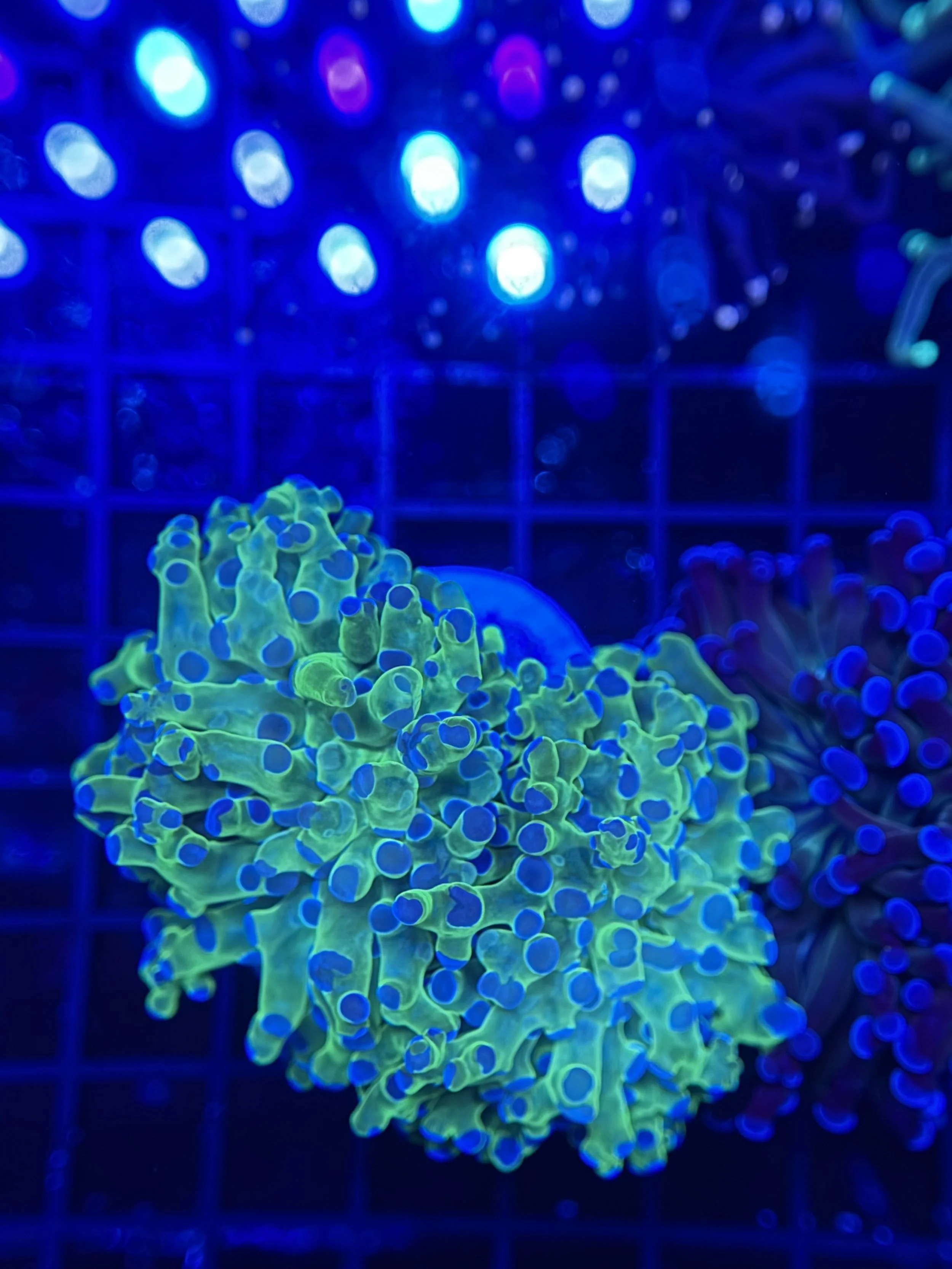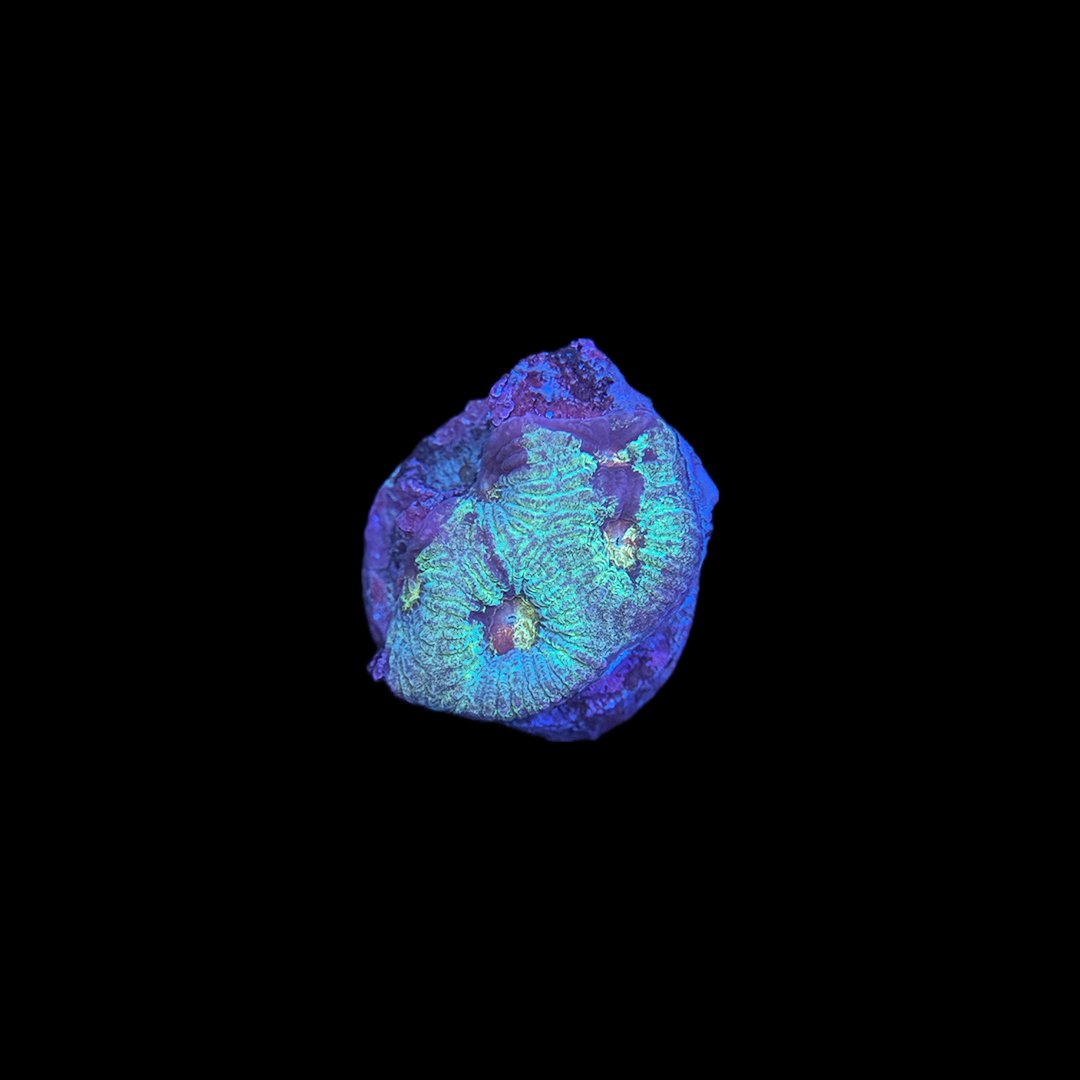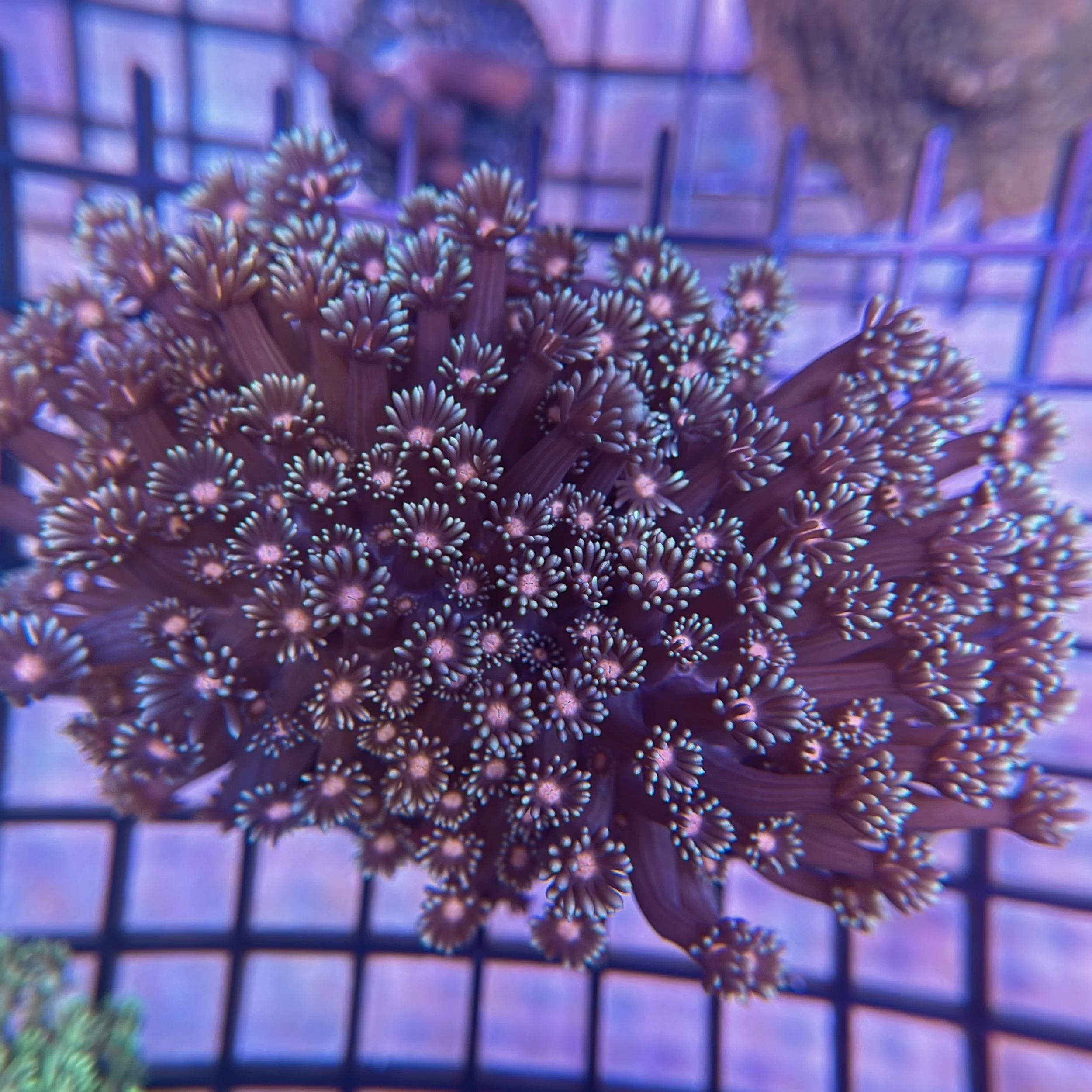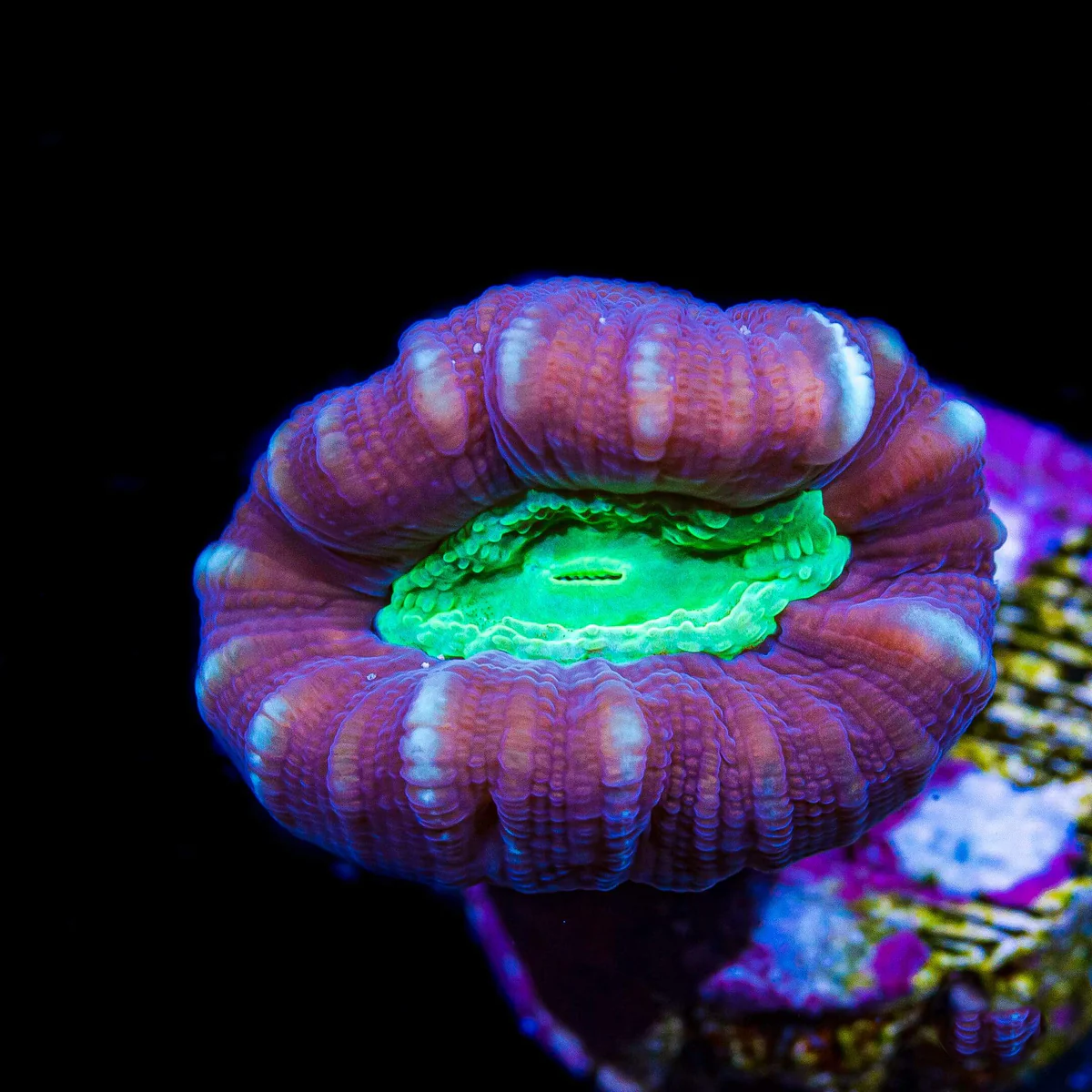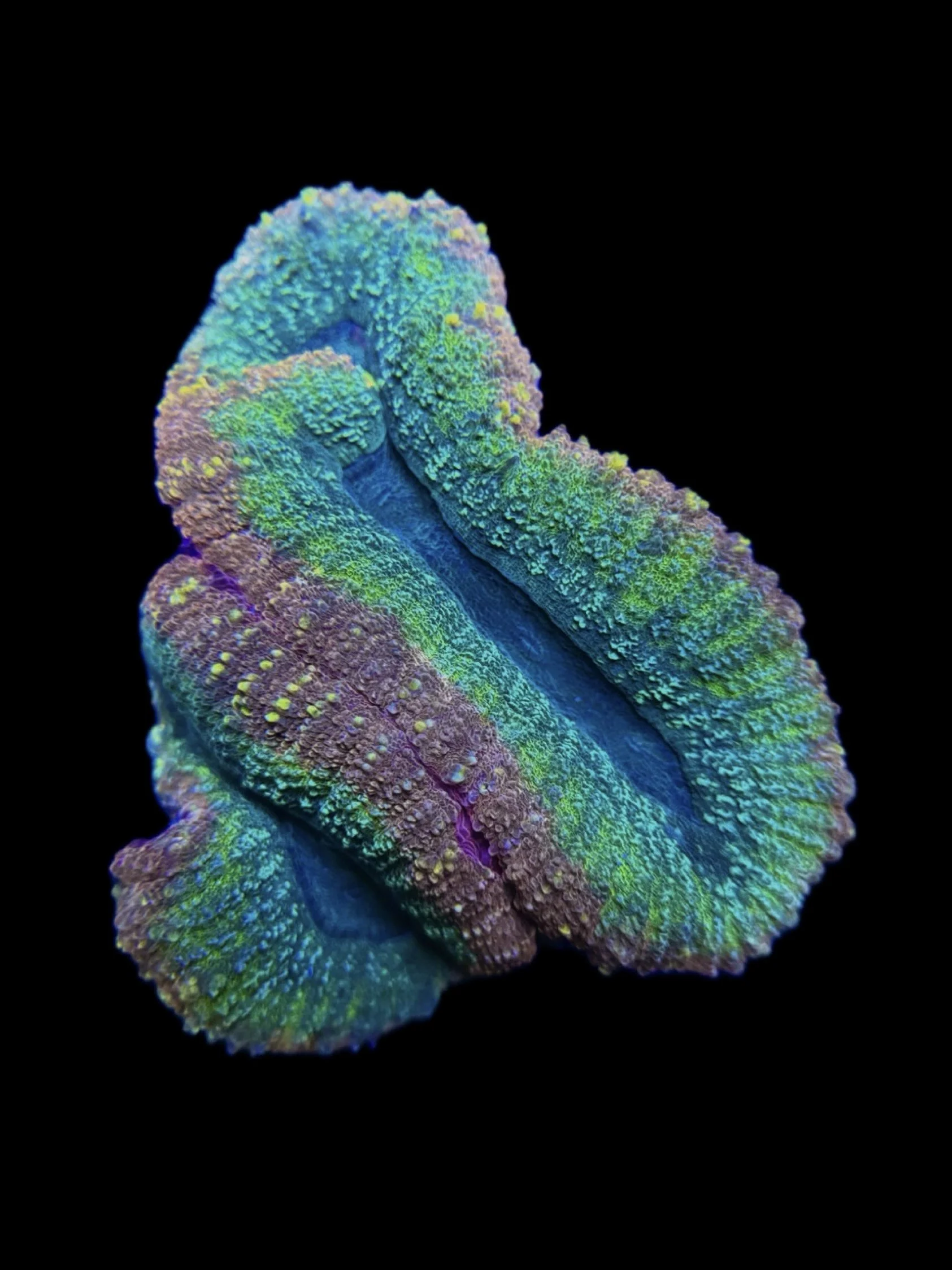 Image 1 of 1
Image 1 of 1


Lobo Colored
Lobophyllia Coral (Lobo Coral) – Description & Care Guide
Description:
The Lobophyllia Coral, commonly called a Lobo Coral or Lobed Brain Coral, is a large polyp stony (LPS) coral prized for its fleshy, sculpted appearance and intense colors. Found in a variety of shades—red, green, blue, orange, or multicolor—this coral brings bold movement and texture to a reef aquarium.
Lobos are relatively hardy, long-lived, and will thrive in a wide range of reef conditions, making them a great choice for both beginner and experienced reef keepers. Their fleshy polyps can expand significantly, covering the underlying ridged skeleton, and they often display vibrant fluorescence under actinic or blue lighting.
Lobophyllia Coral (Lobo Coral) – Description & Care Guide
Description:
The Lobophyllia Coral, commonly called a Lobo Coral or Lobed Brain Coral, is a large polyp stony (LPS) coral prized for its fleshy, sculpted appearance and intense colors. Found in a variety of shades—red, green, blue, orange, or multicolor—this coral brings bold movement and texture to a reef aquarium.
Lobos are relatively hardy, long-lived, and will thrive in a wide range of reef conditions, making them a great choice for both beginner and experienced reef keepers. Their fleshy polyps can expand significantly, covering the underlying ridged skeleton, and they often display vibrant fluorescence under actinic or blue lighting.

